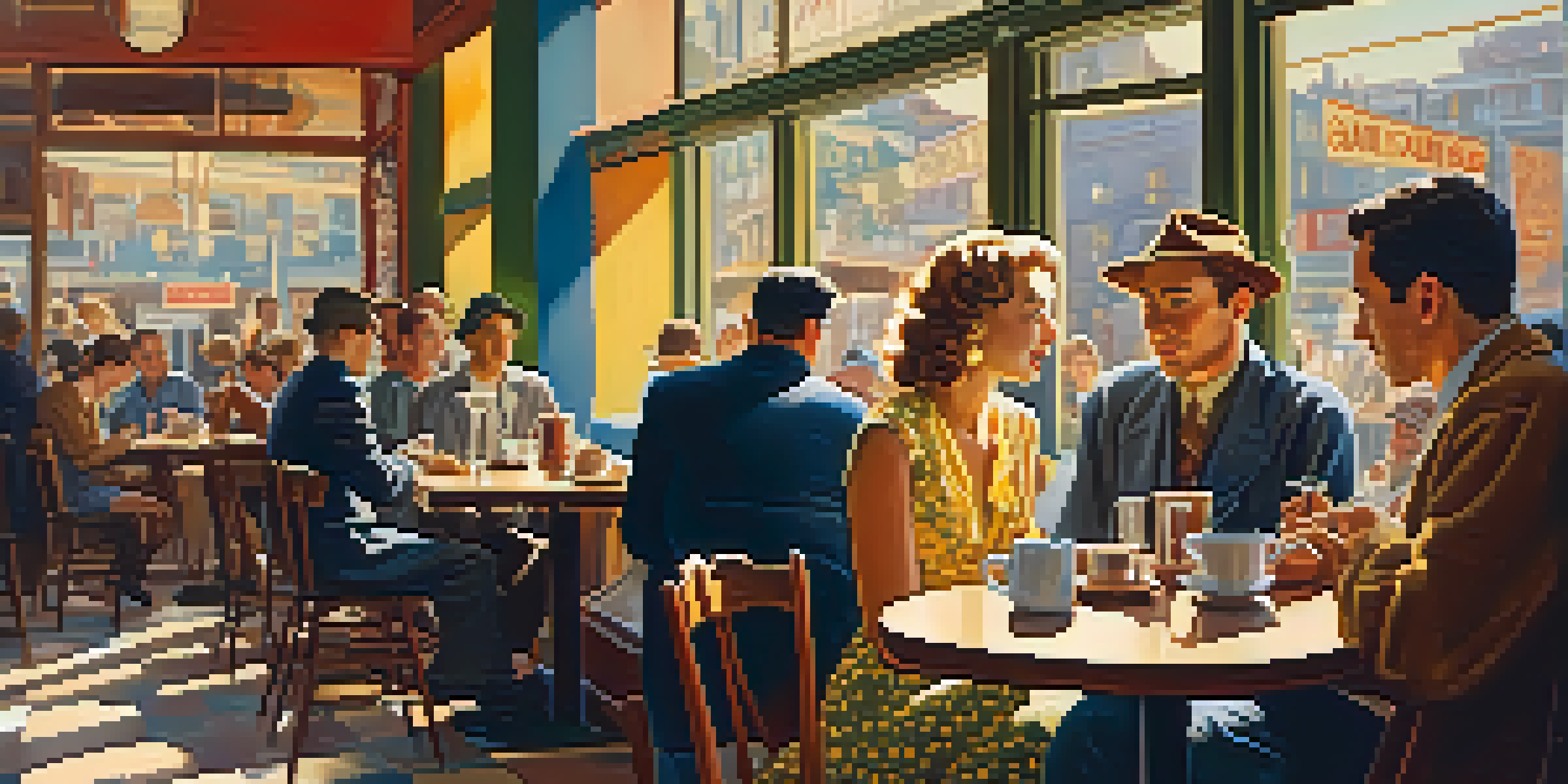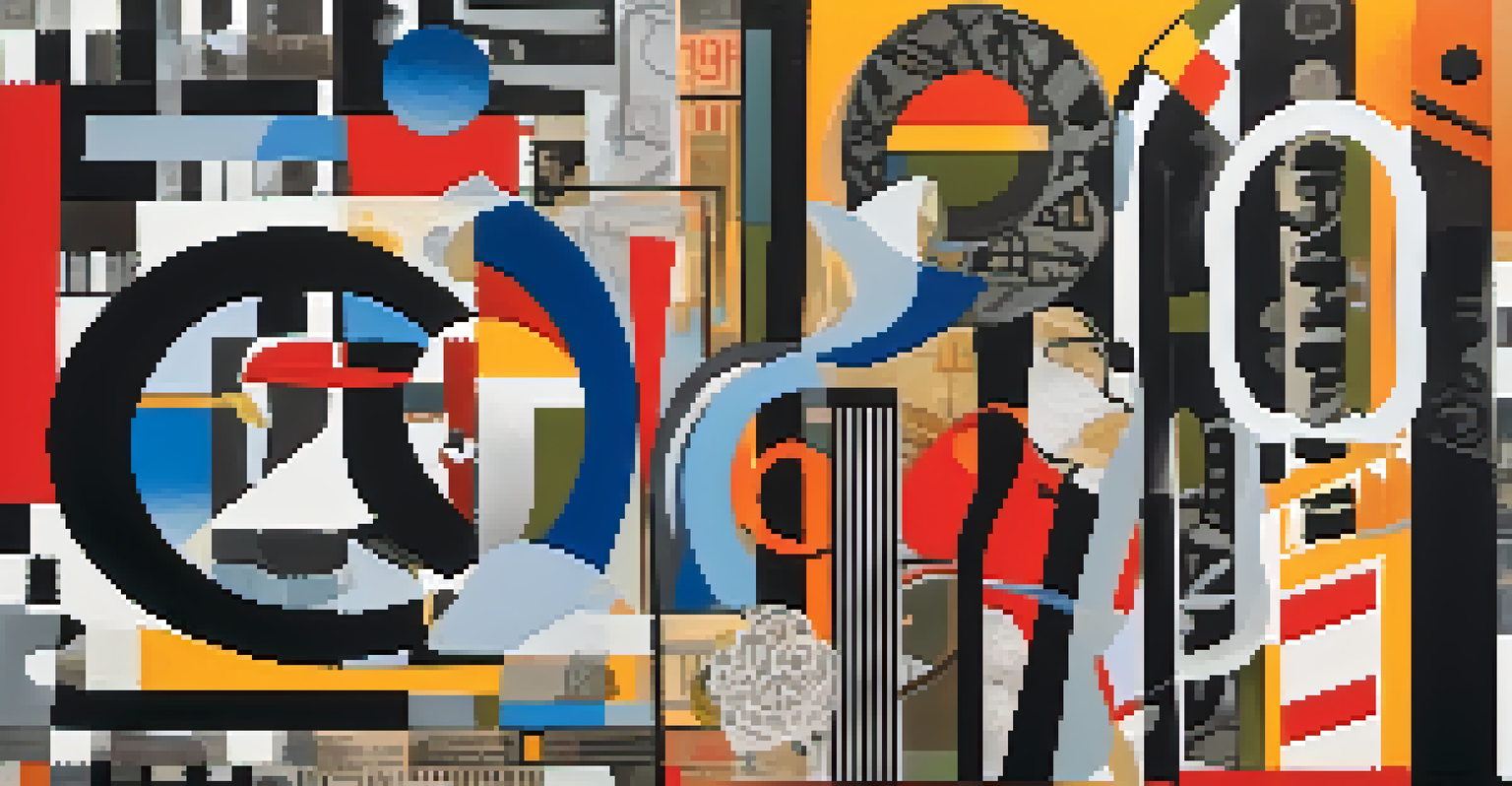The Beatniks: San Francisco's Bohemian Art Revolution

The Birth of the Beat Generation in San Francisco
In the 1950s, a group of writers and artists began to emerge in San Francisco, collectively known as the Beat Generation. This movement was characterized by a rejection of conventional values and a quest for spiritual enlightenment, often expressed through literature, poetry, and art. Figures like Jack Kerouac and Allen Ginsberg were at the forefront, challenging societal norms and exploring themes of sexuality, spirituality, and personal freedom.
The only people for me are the mad ones, the ones who are mad to live, mad to talk, mad to be saved, desirous of everything at the same time, the ones who never yawn or say a commonplace thing, but burn, burn, burn like fabulous yellow roman candles exploding like spiders across the stars.
The city's vibrant atmosphere provided fertile ground for these creative minds. San Francisco's cafes, bookstores, and parks became gathering places where ideas flowed freely, fostering an environment of artistic collaboration. It was here that the Beats found their voice, using their art to critique the status quo and inspire others to think differently.
The Beatniks’ influence extended beyond literature, impacting music and visual arts as well. Jazz, in particular, played a crucial role, with musicians like Charlie Parker and Thelonious Monk inspiring the improvisational style that many Beat poets adopted. The fusion of these artistic elements created a unique cultural revolution that resonated deeply within the city and beyond.
Key Figures: The Icons of the Beat Movement
Among the most iconic figures of the Beatniks was Jack Kerouac, whose novel 'On the Road' became a defining work of the era. This semi-autobiographical tale of spontaneous road trips across America captured the essence of Beat philosophy: a quest for meaning and adventure in a conformist society. Kerouac's free-spirited style and embrace of spontaneity influenced countless writers and artists.

Another pivotal figure was Allen Ginsberg, known for his groundbreaking poem 'Howl.' Ginsberg's work addressed issues of mental health, sexuality, and social justice, pushing the boundaries of what poetry could express. His candid exploration of taboo subjects resonated with many, solidifying his place as a voice for a generation seeking authenticity.
Beat Generation's Cultural Impact
The Beat Generation challenged societal norms and inspired a cultural revolution through their exploration of spirituality, sexuality, and personal freedom.
Lastly, we cannot forget about Lawrence Ferlinghetti, the co-founder of City Lights Bookstore, which became a sanctuary for Beat writers. Ferlinghetti's own poetry and his commitment to publishing the works of the Beats helped to spread their revolutionary ideas far and wide. Together, these figures shaped the Beatnik identity and contributed significantly to the broader cultural landscape.
The Role of San Francisco's Cafés and Bookstores
San Francisco's cafés and bookstores played a pivotal role in the Beatnik movement, serving as communal spaces for artists and intellectuals. Places like The Coffee Gallery and City Lights became hotbeds of creativity, where poets would read their work, musicians would perform, and discussions about art and philosophy flourished. These venues were not just about coffee or books; they were about connection and collaboration.
Follow your inner moonlight; don’t hide the madness.
The atmosphere in these spaces was electric, buzzing with the energy of new ideas and the spirit of rebellion. Writers and artists often gathered to share their thoughts, critique each other's work, and inspire one another. This sense of community was essential in nurturing the artistic spirit of the Beats and allowed their ideas to spread like wildfire.
Moreover, these establishments helped to democratize art and culture, making them accessible to the general public. The Beats encouraged everyone, regardless of background, to engage with literature and art, fostering a culture of inclusivity and open-mindedness. This legacy continues to influence San Francisco's artistic community today.
Beatnik Aesthetics: A Unique Artistic Vision
The Beatniks were not just about words; their aesthetic encompassed a distinct visual style that reflected their values and beliefs. This often included bold colors, abstract forms, and a sense of spontaneity that mirrored the improvisational nature of their poetry and prose. Artists like Robert Rauschenberg and Andy Warhol drew inspiration from the Beat ethos, blending elements of pop culture and fine art.
The use of mixed media became a hallmark of Beatnik art, pushing the boundaries of traditional artistic expression. Collages, installations, and performance art emerged as popular forms, allowing artists to experiment and break free from conventional constraints. This creative freedom resonated with the Beatnik philosophy of self-exploration and authenticity.
San Francisco's Creative Hub
Cafés and bookstores in San Francisco served as vital communal spaces for Beat writers and artists, fostering collaboration and the exchange of revolutionary ideas.
Additionally, the visual representation of the Beat movement often intertwined with political and social messages. Artists used their work to comment on issues like war, inequality, and environmentalism, aligning with the broader countercultural movements of the time. This fusion of art and activism solidified the Beatniks' place in the history of American art.
The Beatniks and the Counterculture Movement
The Beatniks played a crucial role in laying the groundwork for the counterculture movement of the 1960s. Their rejection of materialism and conventional lifestyles resonated with a younger generation that sought to challenge the status quo. As the civil rights movement and anti-war sentiments gained momentum, the Beat philosophy of questioning authority became increasingly relevant.
The Beats' embrace of alternative lifestyles, including communal living and experimentation with drugs, influenced the hippie movement that followed. Their values of peace, love, and personal freedom became rallying cries for a generation seeking to create a more just and equitable society. This cultural shift also brought about a flourishing of music, art, and literature that celebrated individuality.
Moreover, the Beatniks' focus on spirituality and self-discovery paved the way for new forms of expression, including Eastern philosophies and practices. The incorporation of Zen Buddhism and other spiritual traditions into their work encouraged others to explore their own paths. Together, the Beatniks and the counterculture movement reshaped American society in profound ways.
Legacy of the Beatniks in Modern Culture
The legacy of the Beatniks continues to influence modern culture in various ways, from literature to fashion and beyond. Contemporary writers often draw inspiration from Beat themes of exploration and self-discovery, using their work to challenge societal norms. The free-spirited nature of the Beats has paved the way for diverse voices and styles in today's literary landscape.
In the realm of music, many artists and bands have cited the Beat Generation as a source of inspiration. From Bob Dylan to the punk rock movement, the Beats' ethos of rebellion and authenticity resonates deeply. Their emphasis on improvisation and experimentation has also found its way into modern music genres, encouraging artists to break free from traditional structures.
Legacy of Rebellion and Authenticity
The enduring influence of the Beatniks can be seen in modern literature, music, and fashion, emphasizing themes of exploration, self-discovery, and creative expression.
Fashion, too, has been influenced by the Beatnik aesthetic. The iconic black turtlenecks, berets, and jeans associated with the movement have made a resurgence in contemporary style, symbolizing a laid-back yet artistic vibe. This enduring influence reflects the Beatniks' impact on how individuals express themselves creatively and authentically today.
Conclusion: The Enduring Spirit of the Beatniks
In conclusion, the Beatniks of San Francisco ignited a cultural revolution that transformed art, literature, and society. Their fearless exploration of new ideas and rejection of conformity inspired generations to embrace creativity and authenticity. The Beat generation's influence extends far beyond their time, continuing to shape modern culture in profound ways.
As we reflect on the legacy of the Beatniks, we are reminded of the importance of questioning norms and pursuing one's truth. Their spirit of rebellion and exploration encourages us to think critically about the world around us and embrace our unique perspectives. In a society that often values conformity, the Beats remind us of the beauty of individuality.

Ultimately, the Beatniks stand as a testament to the power of art and culture to inspire change. Their contributions to literature, music, and visual arts have left an indelible mark on history, inviting each of us to carry forward their spirit of creativity and self-expression. The Beatnik revolution may have begun in San Francisco, but its echoes continue to resonate around the globe.